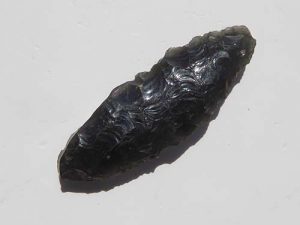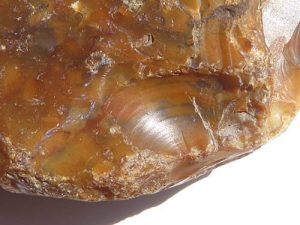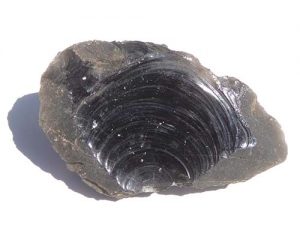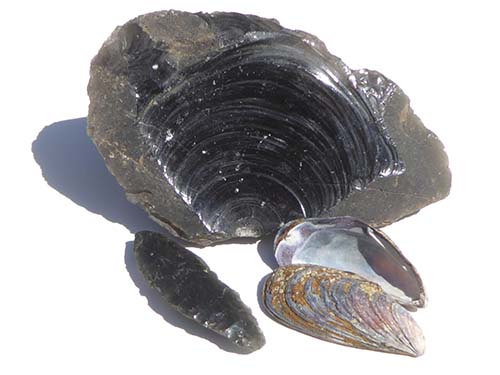
By Jim Brace-Thompson
Conchoidal is not only a weird geological term, it is also vitally important in terms of developments that led to human survival.
In geology, conchoidal refers to a curved, shell-like shape that certain brittle rocks and minerals exhibit if fractured by a blow. As a result of the radiating shock created by a sharp blow, such fractures have smooth rounded concentric ridges that resemble a mussel shell with its growth lines. Indeed, the word “conchoidal” is derived from the Greek word konkhoeides, meaning “like a mussel”.
Conchoidal Fractures Aid in Identification
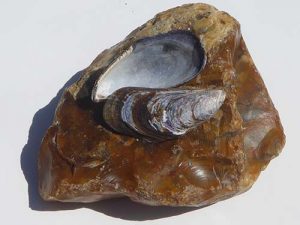
Conchoidal fracture is helpful in identifying certain minerals and mineraloids. For instance, the mineraloid obsidian (volcanic glass) will always fracture in a conchoidal pattern. So, too, will quartz and the family of cryptocrystalline quartz minerals: chalcedony, agate, flint, chert, and jasper. Such rocks do not have any natural plane of separation, as opposed to, say, mica, calcite, or fluorite.
It is thanks to minerals and mineraloids like the quartz family and obsidian and their tendency to fracture in a conchoidal pattern that our ancestors were able to survive and thrive. The undulating shell-like concavities (bowl-like depressions) and convexities (rounded, domed elevations) that result when a piece of obsidian or flint is struck by a stone, stick, or bone produces serrated razor-sharp edges that enabled stone age cultures to produce arrowheads, spear points, knives, scrapers, drills, and ax blades in processes known as knapping and flaking.
Knapping is a fun lapidary art form that you, too, can pursue with proper care and precautions to produce stone age tools from natural rocks and minerals.


